
Syrian boys, right, sit on a pickup flash victory signs, as they pass next of a U.S. vehicle troops, left, on a road leading to the tense front line with Turkish-backed fighters, in Manbij, north Syria, Saturday, March 31, 2018. President Donald Trump’s unscripted public declaration this week about pulling out of Syria “very soon” while at odds with his own policy are unnerving for the Kurds in this context. U.S. troops first deployed in the area about 16 months ago, after Turkish-backed Syrian forces advanced on areas near Manbij, in a race for control of territories as IS militants collapsed. The deployment prevented repeated clashes between the two rival forces. (AP Photo/Hussein Malla)
I’m not opposed to military intervention so long as it makes sense. In fact, I’m sort of a fan of Al Capone’s saying, “You can get so much farther with a kind word and a gun than with a kind word alone.” I’m not necessarily opposed to nation building as that hearkens back to the historic mission of the US Army at the founding of the republic, again as long as there is a nation to build. Having said that, I’ve never been all that clear on exactly what the hell we are doing in Syria. We started out declaring Bashar Assad was a reformer. Then we tried to engineer his ouster on the cheap. And then we declared he was our partner. We have justified our presence there by saying we are fighting ISIS but we are also funding, or have funded, al-Qaeda-lite militias who are supposed to be fighting ISIS as well as fighting Assad. And we have cobbled together the multi-ethnic but primarily Kurdish Syrian Democratic Forces in eastern Syria.
In fairness, Trump inherited the situation and has made more progress in eradicating ISIS in one year than Obama did since the group first burst upon the scene. But still, the question remains. What are we doing there? ISIS is basically beaten. We’re not doing regime change. There is no hint that the administration has bought into the whole Responsibility to Protect (R2P) doctrine espoused by Samantha Power before the Obama administration lit the fuse on a regional war that has spawned genocide and ethnic cleansing and created an unparalleled refugee crisis.
Today, the State Department issued a statement that, to me, asks as many questions as it answers and hints that while regime change is not a stated objective that neither is Syria’s territorial integrity.
The United States, the Global Coalition, and local partners, including the Syrian Democratic Forces, are launching operations to liberate the final ISIS strongholds in Syria. The fighting will be difficult, but we and our partners will prevail. We will defend United States, Coalition, and partner forces if attacked. The days of ISIS controlling territory and terrorizing the people of Syria are coming to an end.
We will work with our NATO ally Turkey and our partners Israel, Jordan, Iraq, and Lebanon to secure their borders from ISIS. We will seek further fair share contributions in forces, material, and resources from regional partners and allies to stabilize liberated territories. As the President said in remarks with President Emmanuel Macron of France, we will ensure that there is a strong and lasting footprint in Syria such that ISIS cannot return and populations liberated from ISIS are not exploited by the Assad regime or its Iranian supporters.
We will reinvigorate the Geneva process under United Nations Security Council Resolution 2254, and mobilize international resources to address Syria’s urgent humanitarian and stabilization needs. The United States is committed to ensuring a future political settlement that honors the will of all Syrians, including Sunni Arabs, Kurds, Christians, Turkmen, and other minorities.
As U.S.-backed #SDF relaunches ground ops vs. #ISIS in E. #Syria, the @StateDept stresses:
1) Cooperation w. “NATO ally #Turkey, Israel, #Jordan, #Iraq & #Lebanon
2) Sustain “a lasting footprint”
3) “Reinvigorate #Geneva”
4) Mobilize international resources -> stabilization pic.twitter.com/9oiK1g6DZe
— Charles Lister (@Charles_Lister) May 1, 2018
Let’s take a look at the map.
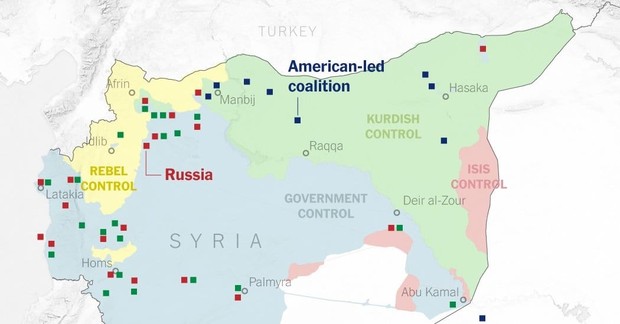
This map is a bit older but ignore the names of the controlling forces, focus on the oil and gas fields and then look at the map above. The current front line puts most of Syria’s oil and gas in the hands of the US proxy force, the SDF.
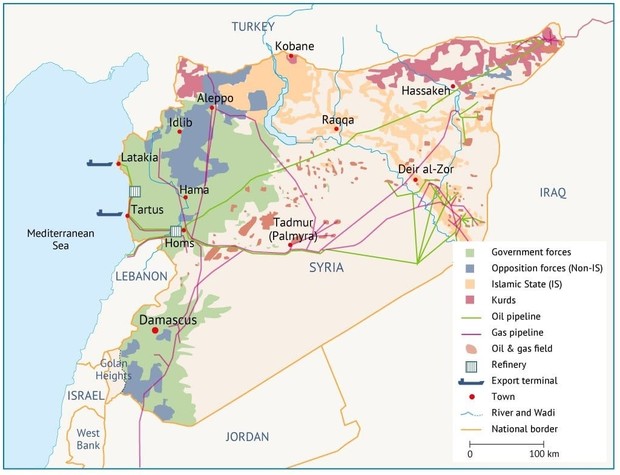
The facts speak for themselves. So long as the SDF holds its current front line, Syria is not a viable economic entity.
If you look at the statement it is addressed to ISIS but it just as clearly says that attacks on the SDF will be met with force by the US. In fact, down in the lower right-hand corner of the map, you’ll see the city of Dier al-Zour/Dier ez-Zour. That is where Russian mercenaries came to grief. Over the weekend, Syrian forces attacked there, seized four towns, and then were driven out by SDF fighters and US air power.
It is also difficult to figure out exactly how we are going to work with our “NATO ally Turkey.” Turkey–and Syria and Iraq and Iran–are dead set against an autonomous Kurdish region and they have sent their military into Syria to crush some Kurdish enclaves.
The map and statement seem to say that we are dividing Syria along that line until such time as a political settlement emerges. Not only is it hard to see a settlement that involves Assad, it is damned hard to see one where the Kurds give up the autonomy they have fought and died for.


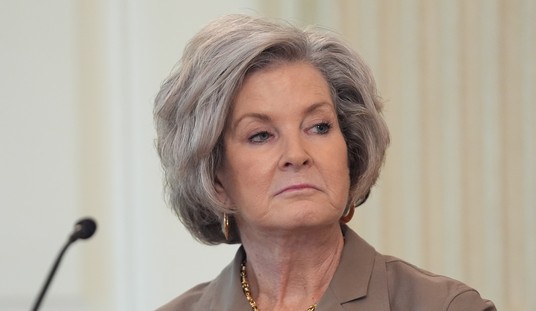
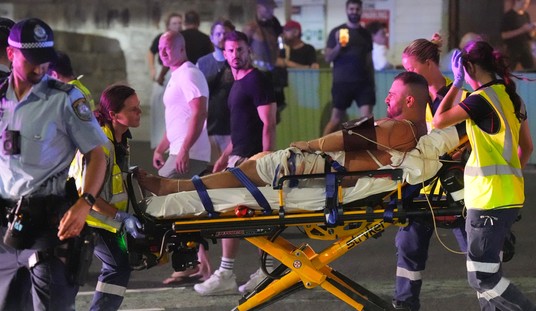



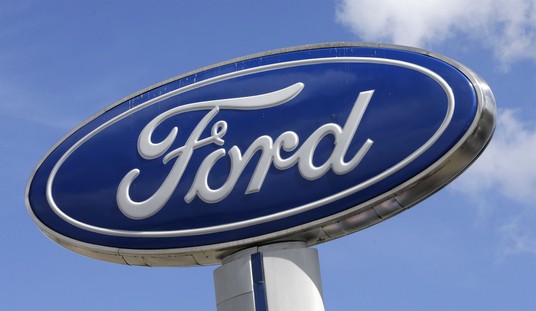




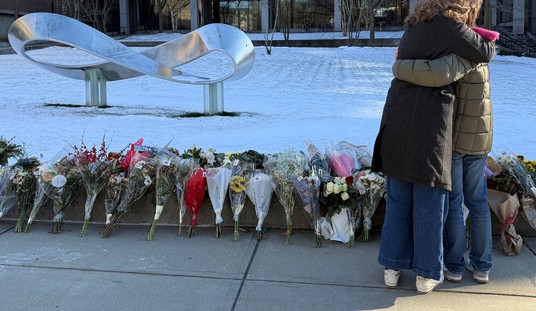
Join the conversation as a VIP Member